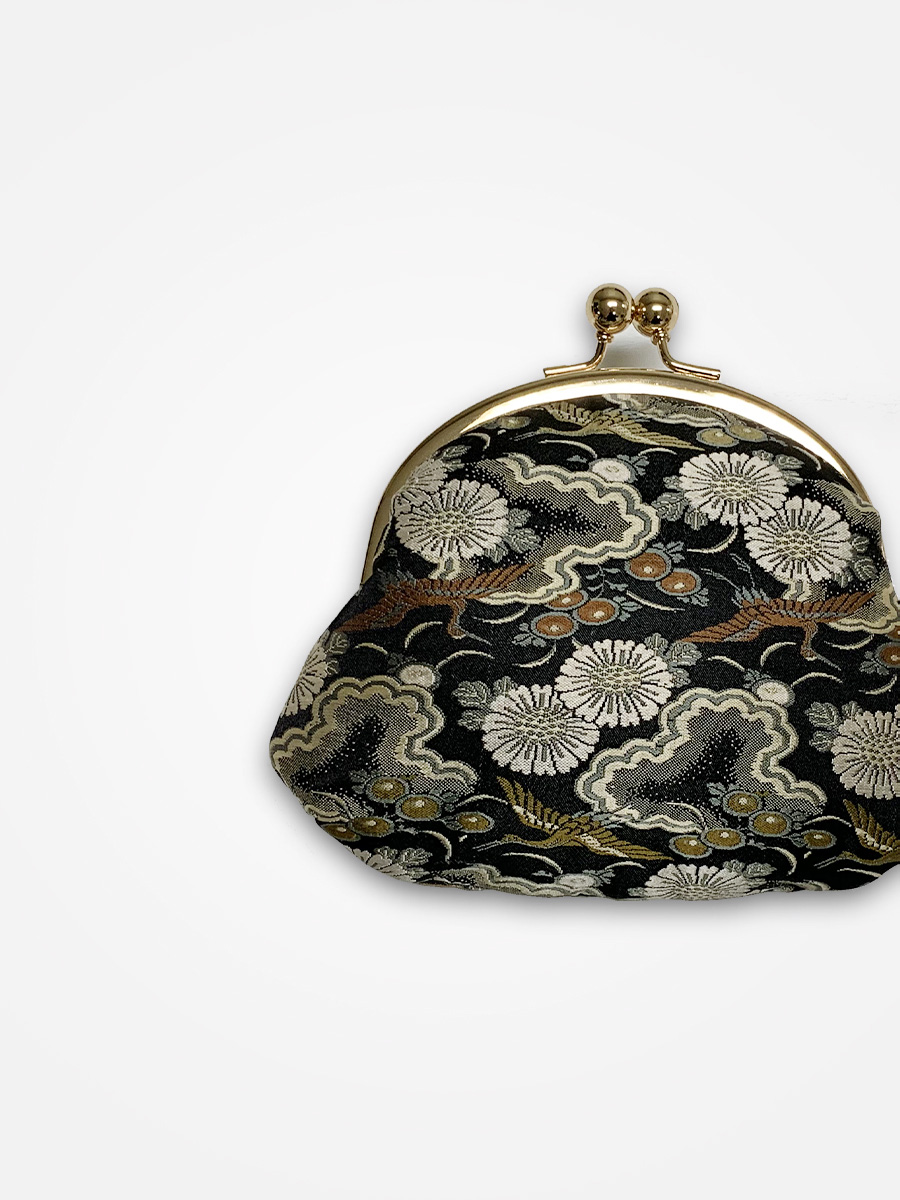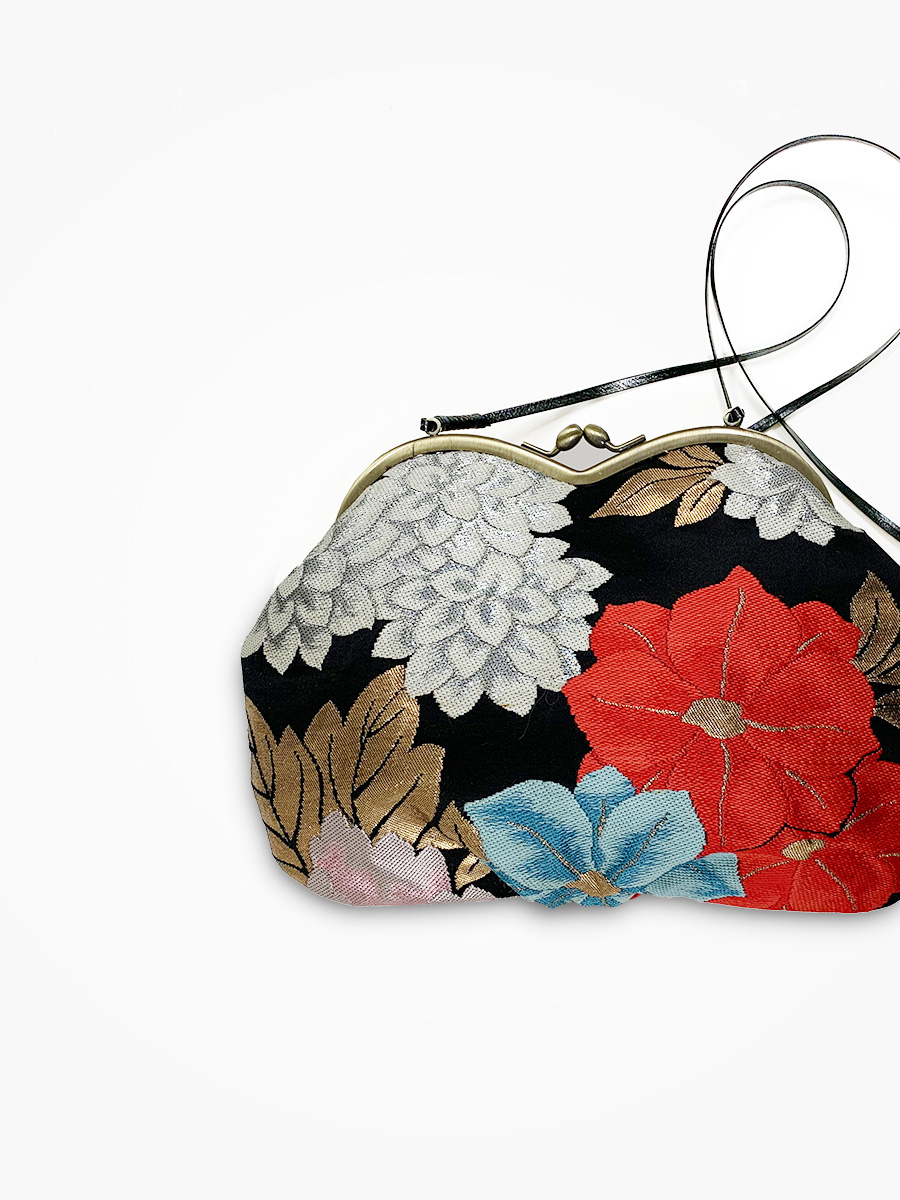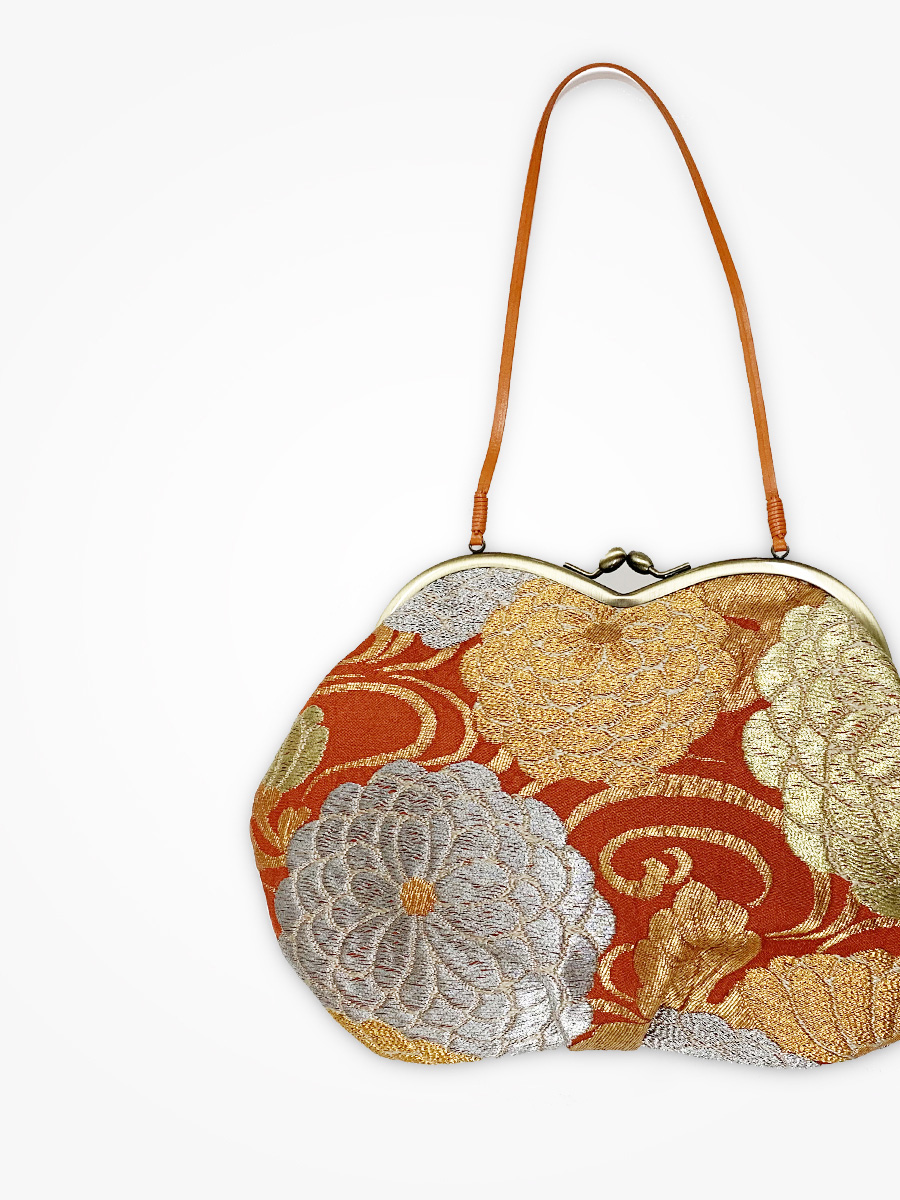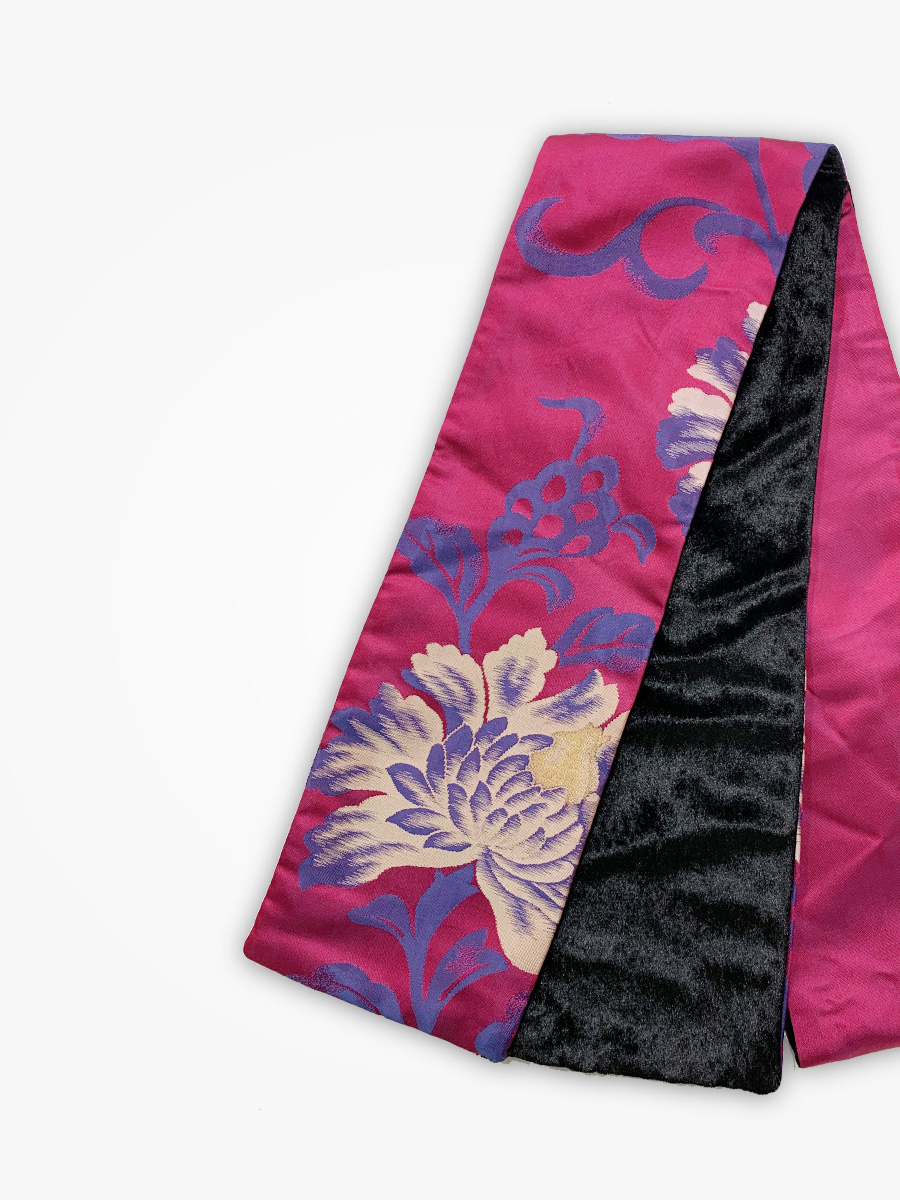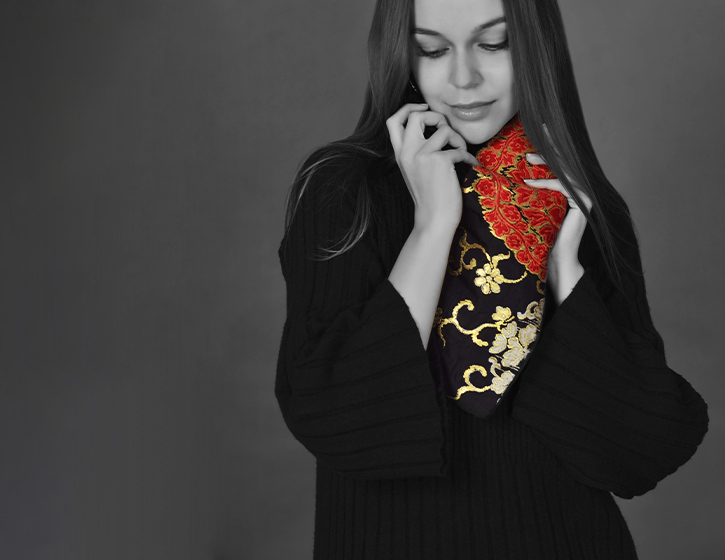
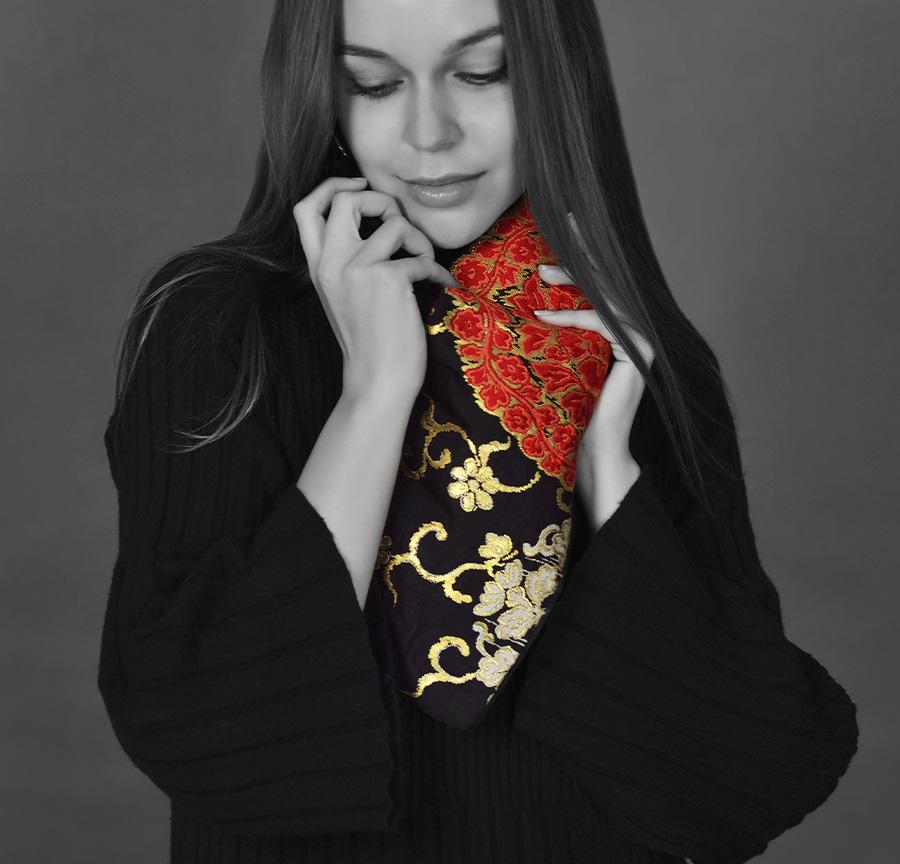
Redesigned the finest antique kimono and obi made about 100 years ago.
Hidden traditional Japanese history.
Delivering the ultimate product to people around the world.
“Kimono” and “obi”, one of the traditional Japanese cultures, are not used in daily life.
We started to redesign kimono and obi, which are such precious resources of Japan, into modern fashion items.
In this exhibition, we will demonstrate a modern fashion item reborn using the best antique kimono and obi made by hand before the early Showa period.
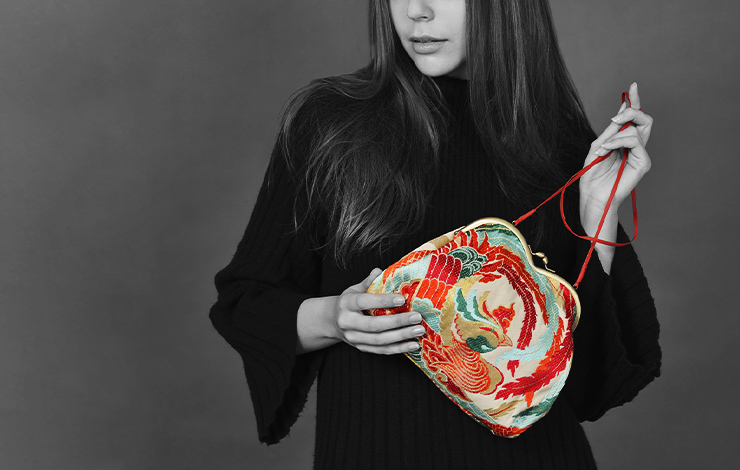
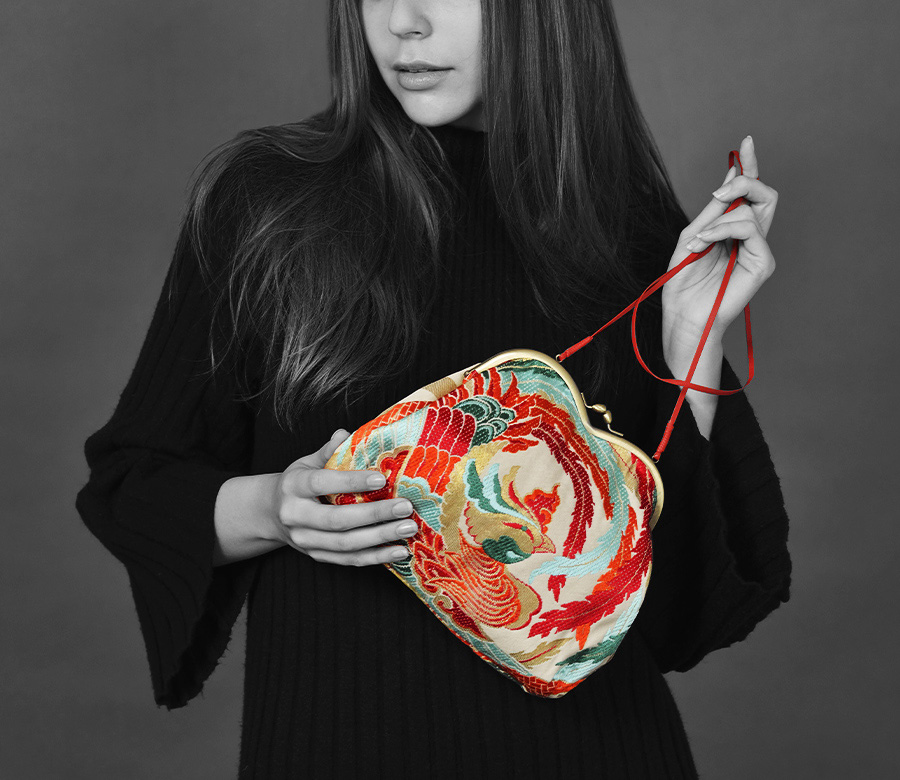
We want you to feel close to Japanese traditional culture.
In antique kimonos and obis before the early Showa era, there are many rare dyed and woven items that have the spirit of sincere craftsmen.
In particular, to draw, embroider, and dye the obi by hand takes months to complete.
These obis have a deep beauty that can never be imitated by mass-produced products.
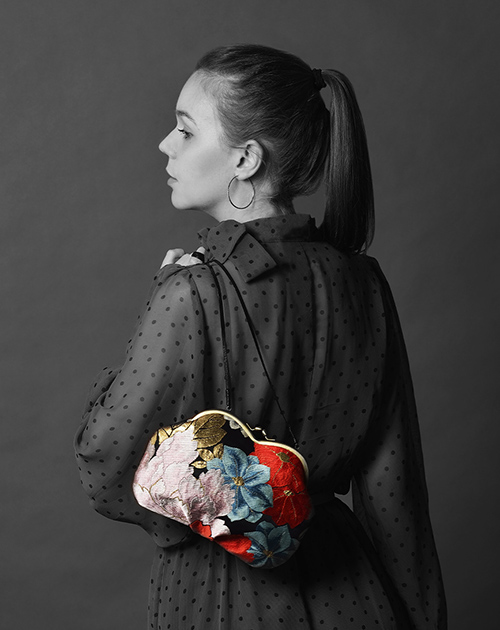
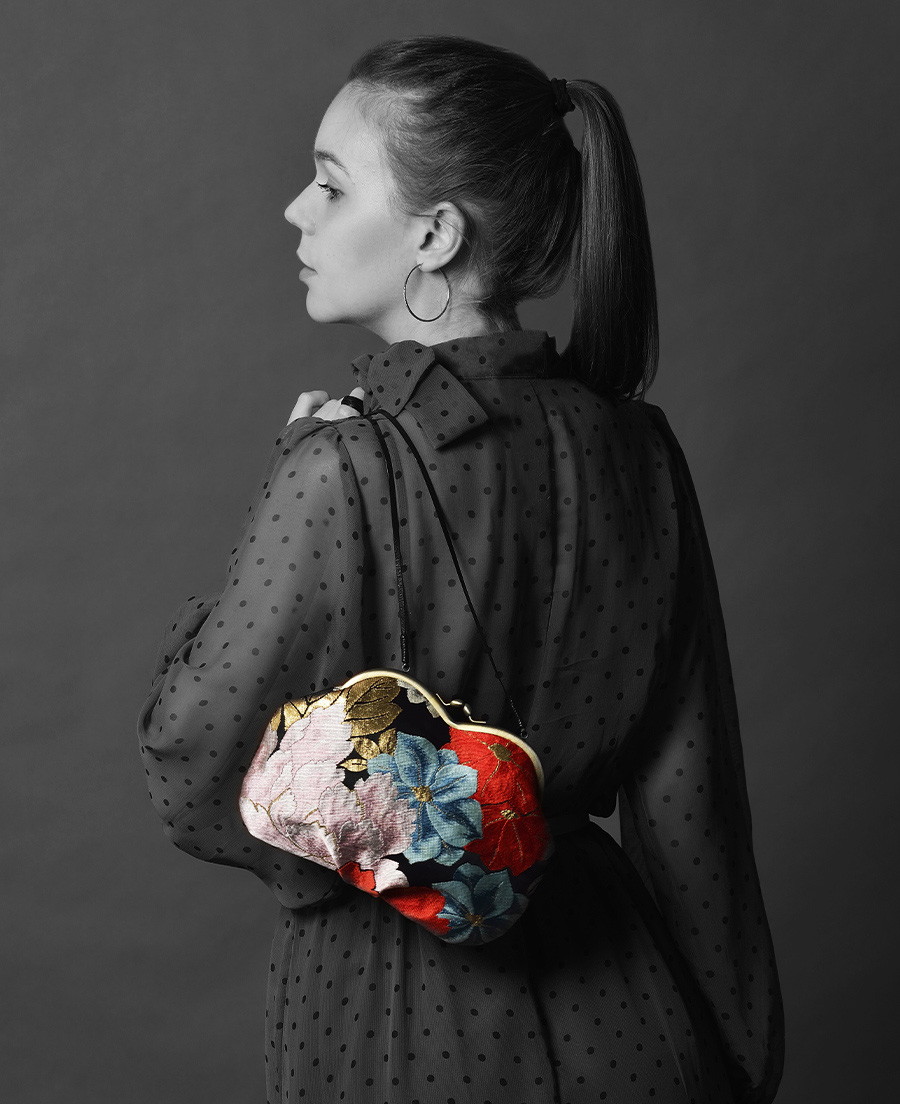
Engraved on the kimono and obi patterns are
“Meaning” and “thought”.
Each obi and kimono pattern has a deep meaning. People at that time chose obi and kimono according to the scene.
For example, this shoulder bag is made using obi with peony and clematis patterns.
Peony in the obi pattern is said to be a king of flowers because it is a symbol of happiness and wealth.
Since clematis is a vine plant, it means a strong bond and is said to be "Kisshomon = good luck" and is often used for bridal gowns.
Please feel close to the meaning of the original pattern born in the history of Japanese traditional culture, the texture, shades and vivid patterns of domestic silk.
Introducing some of the works to be exhibited at the exhibition.
(Part of the exhibited works can be purchased, but it will be shipped after the exhibition.)
Note
The exhibited works can be purchased.(Purchased works will be shipped after the exhibition.) The work is an all-hand made item. As stock in this exhibition is limited. Please do not miss the chance to purchase.
The antique kimonos and obi that we have carefully selected are the finest items that have been carefully stored for many years, but they are antique materials made using techniques and in the environment of those days. How long you can use them in the best condition depends on how you use them. Please understand the characteristics of the materials when you select and use the items.
Benefits
- 30 customers who spend more than 10,000 yen will receive a special obitatami drawstring pouch on a first-come, first-served basis.
- Follow our page on Twitter, Facebook, or Instagram and get a 1,000 yen discount from the purchase price. (Please show the following screen at the time of purchase.)
- Bring a flyer (print PDF) and get a 500 yen discount from the purchase price.
*Discount benefits cannot be combined.
Guide & Access
- Event date & Time
- 12/19/2019(Thu) - 12/23(Mon)
12:00PM – 7:00PM (Until 5:00PM on the last day) - Entrance fee
- free
- Venue
-
Gallery dojunkai (Omotesando Hills)
Omotesando Hills Dojun wing 2F
4-12-10 Jingumae Shibuya-ku 150-0001 TokyoURL : http://www.gallerydojunkai.com
*Part of the exhibited works can be purchased.
(Purchased works will be shipped after the exhibition.)
Greetings
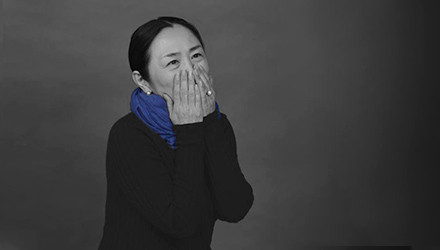
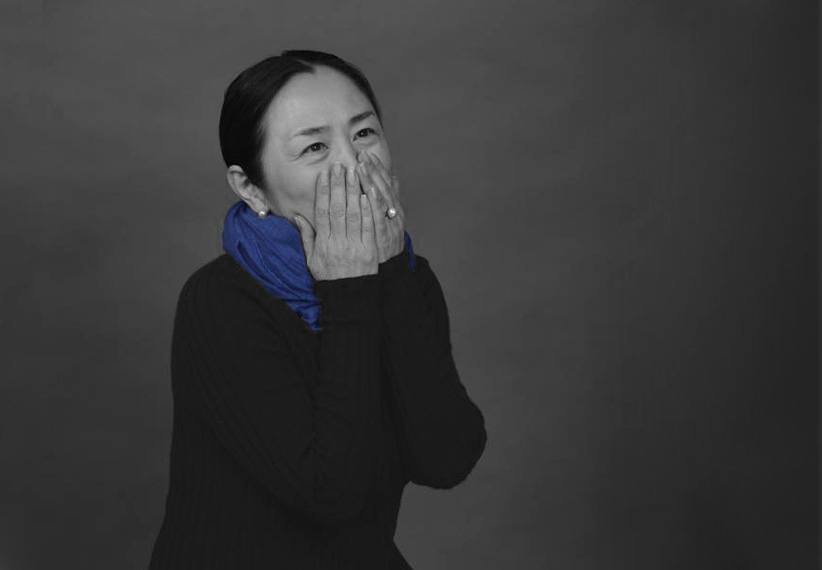
Product designer
Manami Sakurai
From the Meiji era to the Taisho era, weaving, embroidery and tailoring were all done by hand. Therefore, the craftsman's personality can be seen from the way of sewing. When spreading obi on tatami mats I imagine who was using it. I redesign obi which was sleeping in the cage into a form that is easy to use in daily life and revive it in today’s life.
Each obi pattern has its own meaning. Chrysanthemum patterns wishing for longevity and Tachibana patterns wishing for progeny prosperity, etc., will be exhibited at the solo exhibition. We look forward to welcoming you at the “obitatami exhibition” filled with the wisdom and skills of our predecessors.


Business Producer
Hiroyuki Koshi (CEO of Globe Tales Co., Ltd.)
Japan has many wonderful traditional cultural heritage and traditional craft techniques. The current situation is that the traditional culture and heritage remaining in each region are steadily declining without being fully transmitted not only to the people in the country but also to the world.
Based on Japan's “Mottainai culture”, I would like to convey the charm of Japan that should be passed down to the future generations as well as the world as a mission of one Japanese. I would like to send this product to the world through “ISSEN,” a specialty store that collects Japan Design, which is scheduled to open next year, and through exhibitions held overseas.
